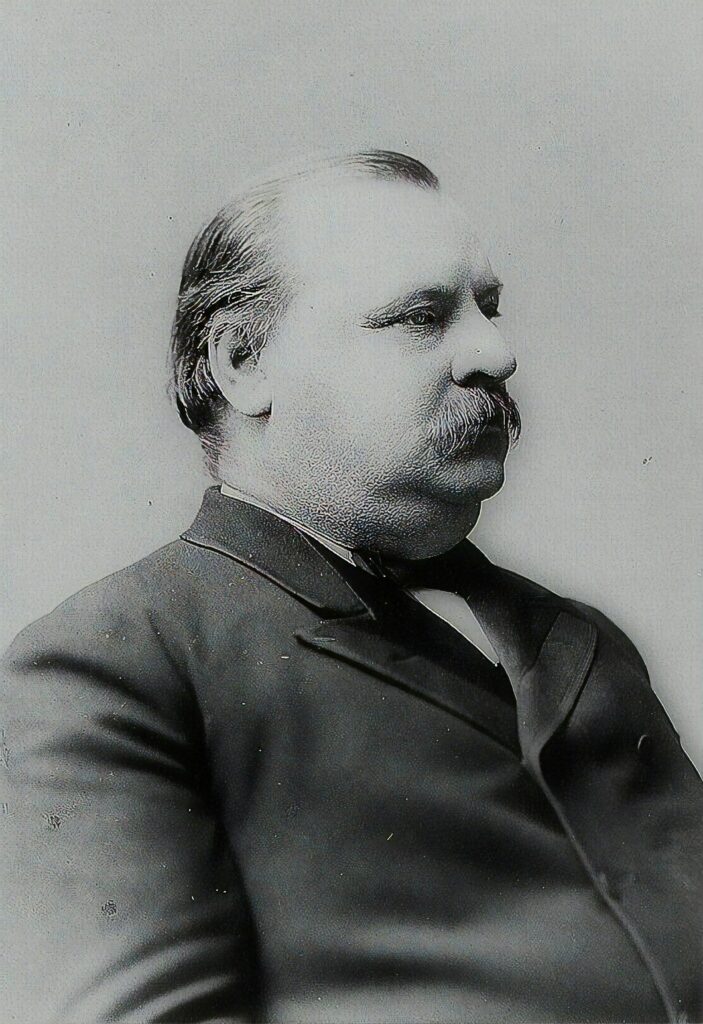Monday Roundup
From Washington, DC,

- Govexec tells us,
- “The U.S. Postal Service said it is well positioned to handle a blitz of mail and packages ahead of the holiday season, though it will confront its busiest time of the year after once again hiring fewer seasonal employees.
- “USPS will bring on just 7,500 temporary workers to help the agency complete processing and delivery efforts, with employees having started as early as October and staying on as late as mid-January. That is down slightly from its target of 10,000 hires last year and precipitously from 45,000 in 2021. Postal management has maintained that its efforts to convert nearly 200,000 part-time staff to full-time, career employees over the last several years has mitigated its need to onboard seasonal workers. “
- The American Hospital Association News lets us know,
- “More than 496,900 consumers who currently do not have health insurance coverage have signed up for a 2025 health plan through the federally facilitated Health Insurance Marketplace, the Centers for Medicare & Medicaid Services reported last week. They join over 2.5 million returning consumers who selected plans for 2025 during the open enrollment period. Open enrollment began Nov. 1 and continues through Jan. 15. Last year, 21.4 million people signed up for coverage.”
- Per an HHS press release,
- “The Administration for Strategic Preparedness and Response (ASPR), part of the U.S. Department of Health and Human Services, today announced two additional Defense Product Act (DPA) Title III Active Pharmaceutical Ingredient (API) investments focused on solving ongoing drug shortages. These new investments seek to rebuild and protect the U.S. public health supply chain as an essential part of national defense.” * * *
- “Under DPA Title III, ASPR’s Office of Industrial Base Management and Supply Chain (IBMSC) will provide $32.4 million to Manus Bio, Inc., a private company in Waltham, Massachusetts, to expand its facilities for the production of key starting materials for essential medicines. Manus will utilize biomanufacturing and incorporate a continuous flow process which enables automated multi-step chemical synthesis. Manus has developed a suite of optimized microbial chassis which gives access to more than 150,000 natural products, known as bioalternatives, including terpenoids, polyketides, phenylpropanoids, and flavonoids.
- “ASPR IBSMC also will provide up to $12 million to Antheia, Inc., a private pharmaceutical ingredient manufacturer located in Menlo Park, California. Antheia’s biomanufacturing platform leverages bioengineering and computational biology to produce critical drug substances in an efficient and scalable one-step fermentation process. Antheia will focus on key starting materials and APIs used in the production of essential medicines.”
- KFF considers “how [a bunch of] pending health-related lawsuits could be impacted by the incoming Trump Administration.”
From the public health and medical research front,
- The Washington Post reports,
- “Bird flu, a virus that can also affect humans, has been discovered in a batch of raw milk sold in California store refrigerators, state regulators said Sunday. While there have been no reported illnesses in this most recent case, it comes just a few days after a child tested positive for bird flu for the first time in U.S. history.
- “A batch of whole raw milk from Raw Farm that has a “best by” date of Nov. 27, 2024, has been recalled after Santa Clara County health officials detected bird flu in a sample purchased for testing, the California Department of Public Health said in a news release. The farm is in Fresno County.
- “Retailers have been notified to pull the product from their refrigerator racks, the state health department said. Consumers who may have it in their homes are advised not to drink it.”
- MedPage Today adds,
- “Last week, it was reported that an infant died from a Listeria infection in an outbreak tied to ready-to-eat-meat products. Meanwhile, recalls continue after an outbreak of Escherichia coli from bagged organic carrots led to 15 hospitalizations and a death.
- “What seems like a marked rise in reports of foodborne illnesses in recent months may not be an illusion — but experts say the reasons behind a presumed increase may be more related to how we track these outbreaks than the outbreaks themselves.”
- The American Medical Association explains what doctors wish their patients knew about peripheral artery disease.
- Consumer Reports, writing in the Washington Post, tells us “Sugar substitutes are everywhere. How safe are they to eat? Manufacturers are responding to growing demand by using non-sugar sweeteners to replace some or all of the sugar in many foods and drinks.”
- Per STAT News,
- “Alector Therapeutics said Monday that its Phase 2 trial for an experimental Alzheimer’s antibody failed, dealing a blow to what had been one of the leading dark horse approaches to treating the neurodegenerative disease.
- “The drug, called AL002, is designed to activate a group of surveilling neuronal immune cells called microglia. It was among several efforts, now in or nearing clinical trials, predicated on the notion that modulating the brain’s immune system could slow the degenerative disease.
- “In the 381-person trial, however, patients who received AL002 didn’t decline more slowly than patients who were on placebo, as measured by a scale called the Clinical Dementia Rating Sum of Boxes. Alector said the trial also failed to show an effect on secondary measures of cognition and function, or on biomarkers associated with the disease, such as amyloid levels.”
- Per Fierce Pharma,
- “Incyte’s previously disclosed phase 3 win in relapsed or refractory follicular lymphoma (R/R FL) sent the company racing to file an expansion bid for its Monjuvi (tafasitamab) by year-end. Now, a clearer picture of the drug’s success in the patient population has been revealed courtesy of a research paper published ahead of this year’s American Society of Hematology Annual Meeting & Exposition.
- “In the phase 3 inMIND study, Monjuvi—added to Bristol Myers Squibb’s Revlimid and Roche’s Rituxan—triggered a 57% reduction in the risk of disease progression, relapse or death in R/R FL patients compared with those who were treated with placebo, Revlimid and Rituxan, according to the paper.
- “Researchers determined a median investigator-assessed progression free survival of 22.4 months for the treatment arm versus 13.9 months for the control group. The benefits in progression-free survival were consistent across subgroups, the researchers said.”
- and
- “After a recent failed showing in a breast cancer subgroup raised doubts around AstraZeneca’s Truqap, the first-in-class AKT inhibitor is making inroads in a prostate cancer subtype.
- “High-level results from the company’s ongoing CAPltello-281 phase 3 study demonstrated that a combination of Truqap, Johnson & Johnson’s Zytiga and androgen deprivation therapy (ADT) delivered statistically significant and clinically meaningful improvements on the trial’s primary endpoint of radiographic progression-free survival (rPFS), AZ said on Monday.
- “The trial compared the regimen versus the standard-of-care Zytiga and ADT in patients with PTEN-deficient de novo metastatic hormone-sensitive prostate cancer (mHSPC), a specific type of prostate cancer with a particularly poor prognosis, AZ said in its Monday press release.”
- Per BioPharma Dive,
- “Adding Merck & Co.’s new cardiovascular drug Winrevair to background therapy helped people with severe lung hypertension stay alive and avoid invasive medical care longer than those who only received background therapy, the company said Monday.
- “Data from the ZENITH trial could potentially expand use of a drug that’s now forecast to earn $5 billion a year at its peak. A trial steering committee stopped the trial early at an interim checkpoint because data indicated the Winrevair combination clearly outperformed placebo, Merck said.
- “Merck obtained Winrevair in 2021 with its $11 billion acquisition of Acceleron in 2021. The pharmaceutical company is looking for sales of heart disease drugs to drive growth in coming years as its biggest seller, the cancer treatment Keytruda, loses market exclusivity later in the decade.”
- and
- “An experimental, muscle-preserving drug from Biohaven fell short of its goal in a Phase 3 study of people with spinal muscular atrophy, but showed enough promise in its effects on body composition that the company plans to advance it as a treatment for obesity.
- “A regimen of Biohaven’s drug, taldefgrobep alfa, and a standard SMA therapy didn’t significantly improve motor function after 48 weeks compared to treatment with a typical SMA medicine and placebo. Biohaven didn’t provide full study data in a Monday statement, but claimed it found “efficacy signals” in certain subgroups and plans to discuss potential paths forward in SMA with U.S. regulators.
- “Treatment was associated with positive changes on body composition, Biohaven said. The “overall strength and consistency” of those findings has encouraged the company to “rapidly advance” the drug into a placebo-controlled Phase 2 trial in obesity by the end of the year.”
From the U.S. healthcare business front,
- The Washington Post discusses at length hospital and emergency care at home programs.
- Fierce Pharma informs us,
- “After six straight quarters in which Eli Lilly or Novo Nordisk achieved the highest year-over-year revenue growth among the top companies in the biopharma industry, there was a new champion in the third quarter—and it was a major surprise.
- “With a 32% increase in sales, Pfizer delivered the No. 1 bump among large drugmakers in the period, topping the sales growth figures for Novo (21%) and reigning champion Lilly (20%).
- Pfizer’s performance came during a remarkable quarter of revenue growth for the industry. Of the industry’s top 20 companies by sales, nine posted double-digit increases and just three saw declines. This contrasts, for example, to the first quarter of 2023, when Novo at 27% was the only company with a double-digit increase in sales and was among only six of the top 20 drugmakers that had a year-over-year (YOY) revenue boost.”
- Beckers Hospital Review warns that 705 rural hospitals are at risk of closure and discusses the ongoing legal battle between GLP-1 drugmakers and compound pharmacies.
- MedCity News interviews Nworah Ayogu, head of healthcare impact at Thrive Capital, who suggests three mindset shifts that providers should adopt in order to succeed at consumer driven care.
- Modern Healthcare reports,
- “Mount Sinai Health System has opened a $100 million building dedicated to artificial intelligence.
- “The Hamilton and Amabel James Center for Artificial Intelligence and Human Health is dedicated to the research and development of AI tools that can be used across the eight-hospital system, Mt. Sinai said Monday.
- “The facility is housed in a 65,000-square-foot building on New York City’s Upper East Side near the system’s main campus. It will centralize Mount Sinai’s AI efforts in genomics, imaging, pathology, electronic health records and clinical care.”
- MedTech Dive relates,
- “Boston Scientific said Monday it has agreed to acquire Intera Oncology, which makes treatments for liver tumors primarily caused by metastatic colorectal cancer.
- “Newton, Massachusetts-based Intera developed the Intera 3000 hepatic artery infusion (HAI) pump and chemotherapy drug floxuridine, both of which are approved by the Food and Drug Administration.
- “The companies did not disclose the terms of the deal. Boston Scientific expects the acquisition to close in the first half of 2025, subject to closing conditions.”
- Per Fierce Healthcare,
- “Teladoc Health launched an artificial-intelligence-enabled technology that allows hospital staff to virtually detect when a patient is at risk of falling from a hospital bed. The solution, unveiled Monday and called Virtual Sitter, is now commercially available.
- “Hospitalized patients may be at risk of falling from their hospital beds for innocuous reasons, such as needing to use the bathroom, leaning to get a cup of water or to reach a phone and contact family. Nearly 1 million hospitalized patients experience falls each year, and 30% result in lasting injuries, Teladoc Health cited in a press release.
- “The Virtual Sitter uses AI to detect when a patient performs a movement that puts them at risk of falling. Using computer vision, the Virtual Sitter technology detects when the patient moves beyond set spatial boundaries. Teladoc’s advanced AI can distinguish the patient from other people in the room, can determine whether the patient is sitting up or lying down to determine risky movements, and tracks limb movements.
- “On the other end of the Virtual Sitter is a hospital-trained, nonclinical staff person who can safely monitor up to 25% more patients with the technology. The AI movement detection alerts the remote staff member when a patient crosses the boundaries of the Bounding Box or moves in a risky fashion.”






